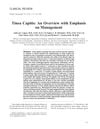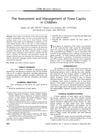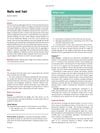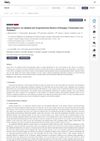TLDR Kerion cases had longer disease duration but responded well to antifungal treatments.
The study reviewed 12 cases of kerion and 12 cases of non-inflammatory tinea capitis, finding that kerion cases had longer disease duration and more extensive lesions. Sixteen patients received systemic antifungals, with the kerion group showing good response to treatments, including itraconazole and terbinafine. The median time to scalp clearing, new hair growth, and complete hair regrowth in the kerion group were 27, 33, and 89 days, respectively. A lower dose of prednisolone (median 0.26 mg/kg/day) was effective in managing inflammation in kerion cases.
 89 citations
,
May 1999 in “Pediatric Dermatology”
89 citations
,
May 1999 in “Pediatric Dermatology” New antifungal treatments for a children's scalp infection are effective and safe, but it's not decided if they will become the preferred option over the old treatment.
102 citations
,
January 2020 in “Recent Patents on Inflammation & Allergy Drug Discovery” Tinea capitis in young children requires oral antifungal treatment for effective management.
 41 citations
,
September 2007 in “Pediatric emergency care”
41 citations
,
September 2007 in “Pediatric emergency care” Oral medication is necessary to treat scalp fungus in children, with griseofulvin being the usual choice.

Different hair and nail conditions can indicate health issues and have specific treatments; accurate diagnosis is crucial before treatment.
 1 citations
,
July 2023 in “Journal of Clinical Medicine”
1 citations
,
July 2023 in “Journal of Clinical Medicine” Different causes of beard hair loss have various treatments, including medications, lifestyle changes, and procedures to stimulate hair growth.



